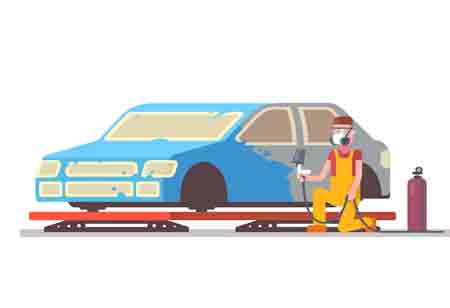Thank you for Subscribing to Auto Business Outlook Weekly Brief
Use Cases of Automotive Paint
Automotive paint is not just an accessory in the automotive industry; it is a fundamental element that serves numerous critical functions.

By
Auto Business Outlook | Thursday, March 27, 2025
Stay ahead of the industry with exclusive feature stories on the top companies, expert insights and the latest news delivered straight to your inbox. Subscribe today.

Advancements in paint formulations lead to more efficient application processes, reducing waste and energy consumption during manufacturing.
FREMONT, CA: Automotive paint is not just an accessory in the automotive industry; it is a fundamental element that serves numerous critical functions. Beyond enhancing aesthetics, it improves vehicle durability, safety, and overall performance. The diverse automotive paint applications make it necessary in vehicle manufacturing and upkeep. A key use of automotive paint is its ability to elevate a vehicle’s aesthetic appeal. An extensive array of colors and finishes allows manufacturers and consumers to express individuality and style. Visual attractiveness can profoundly impact purchasing decisions, underscoring its significance in automotive design.
Beyond standard colors, custom paint jobs and unique finishes, such as metallic, pearlescent, and matte, allow vehicle owners to personalize their cars, reflecting individual tastes and preferences. The essential function of automotive paint is to protect the vehicle's body from corrosion and environmental damage. The paint is a barrier against moisture, salt, chemicals, and ultraviolet (UV) rays, which can cause rust and deterioration over time. Applying multiple layers, including primers, base coats, and clear coats, ensures the vehicle's metal surfaces are well-protected. Automotive paint is a multifaceted component that extends beyond visual appeal to play crucial roles in protection, safety, performance, and sustainability.
Advances in paint technology have led to more durable and long-lasting coatings that provide enhanced protection against harsh environmental conditions. When a vehicle is damaged through collisions or minor scratches, paint is used to restore its appearance and protect the exposed metal. The availability of touch-up paints and advanced color-matching technology ensures that repairs are seamless and maintain the vehicle's original look. Body shops and repair centers rely on high-quality automotive paints to deliver precise, durable fixes that uphold the vehicle's value and aesthetics. Automotive paint enhances vehicle safety.
Reflective and luminescent paints improve vehicle visibility in low-light conditions. These paints are commonly applied to emergency vehicles, road signs, and other critical components to ensure drivers easily see them. Some manufacturers incorporate high-visibility paint schemes on specific vehicle parts to improve safety. The automotive industry increasingly focuses on sustainability; automotive paint is no exception. Automotive paint is integral to repair and maintenance processes. Innovations in automotive paint have led to the development of heat-reflective coatings that contribute to better heat management and energy efficiency.
The car's interior remains cooler, decreasing the reliance on air conditioning systems and improving fuel efficiency. These paints can reflect infrared radiation, reducing the heat absorbed by the vehicle's surface. The paints mitigate the release of harmful emissions into the atmosphere, contributing to cleaner air and healthier communities. Whether enhancing a vehicle's look, protecting it from the elements, or improving its efficiency, automotive paint remains vital in modern vehicles' design, manufacturing, and maintenance.






